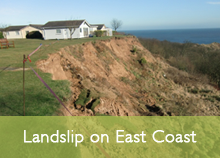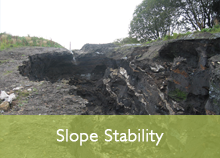Ground Stabilisation
Unstable ground can take the form of obvious concerns such as soil and rock slopes, earthworks both temporary and permanent, but can also comprise less obvious ground instability caused by soft or loose ground, mining voids, loose infilled material, geological faults, brine extraction, mineral extraction, underground fractures and other factors. Early identification of the problem, detailed investigation and design of suitable stabilising remediation or special ground treatment or special foundations are essential to reduce risk, to provide ground suitable for development or to incorporate design to mitigate difficult ground conditions.
Stabilisation may take the form of:
- Regrading steep slopes
- Rock anchoring slopes
- Soil nailing
- Underpinning buildings.
- Stabilising mine workings and mine shafts.
- Capping mine shafts.
- Vibrocompaction to strengthen the ground.
- Dynamic compaction to increase bearing capacity.
Or designing foundations to accommodate difficult ground conditions, including:
- Design of special foundations.
- Underpinning buildings.
- Piling through soft ground.
- Reinforced raft foundations
Slope Stability
Slope stability is essential for development and general safety of the public. Ashton Bennett undertake investigation and assessment of soil and rock slopes to determine stresses in the ground and to determine the mechanism for slope failure. Ground investigation techniques include pore water pressure measurements, inclinometer installation and measurement, magnetic extensometer and monitoring of settlement. Use is made of computer software to determine the Factor of Safety and to design safe slopes.
Slope stabilisation techniques are designed and implemented and may comprise rock anchors,
soil nails, regrading the slope or other structural engineering techniques.
Where slope regrading involves removal of waste, landfilling is avoided by use of composting and other recycling techniques.
Stabilisation may take the form of:
- Instrumentation to monitor slope movement.
- Reprofiling.
- Adding weight to the slope toe.
- Relieving water pressure.
- Soil nailing..
- Ground and rock anchoring.
- Construction of gabion walls.
- Rock bolts or other slope stabilisation techniques.
- Mixing waste to form a commodity such as compost

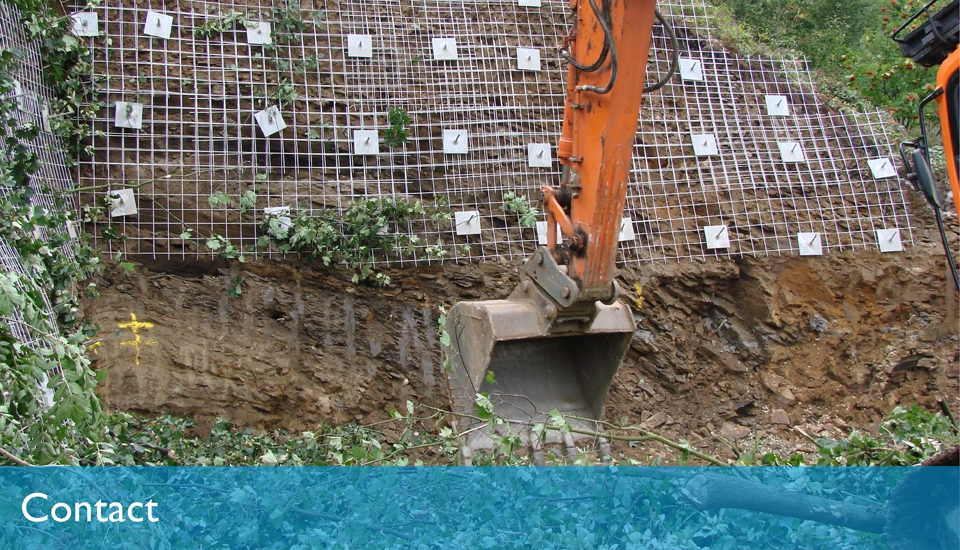
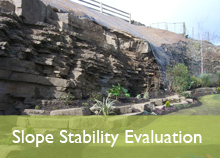
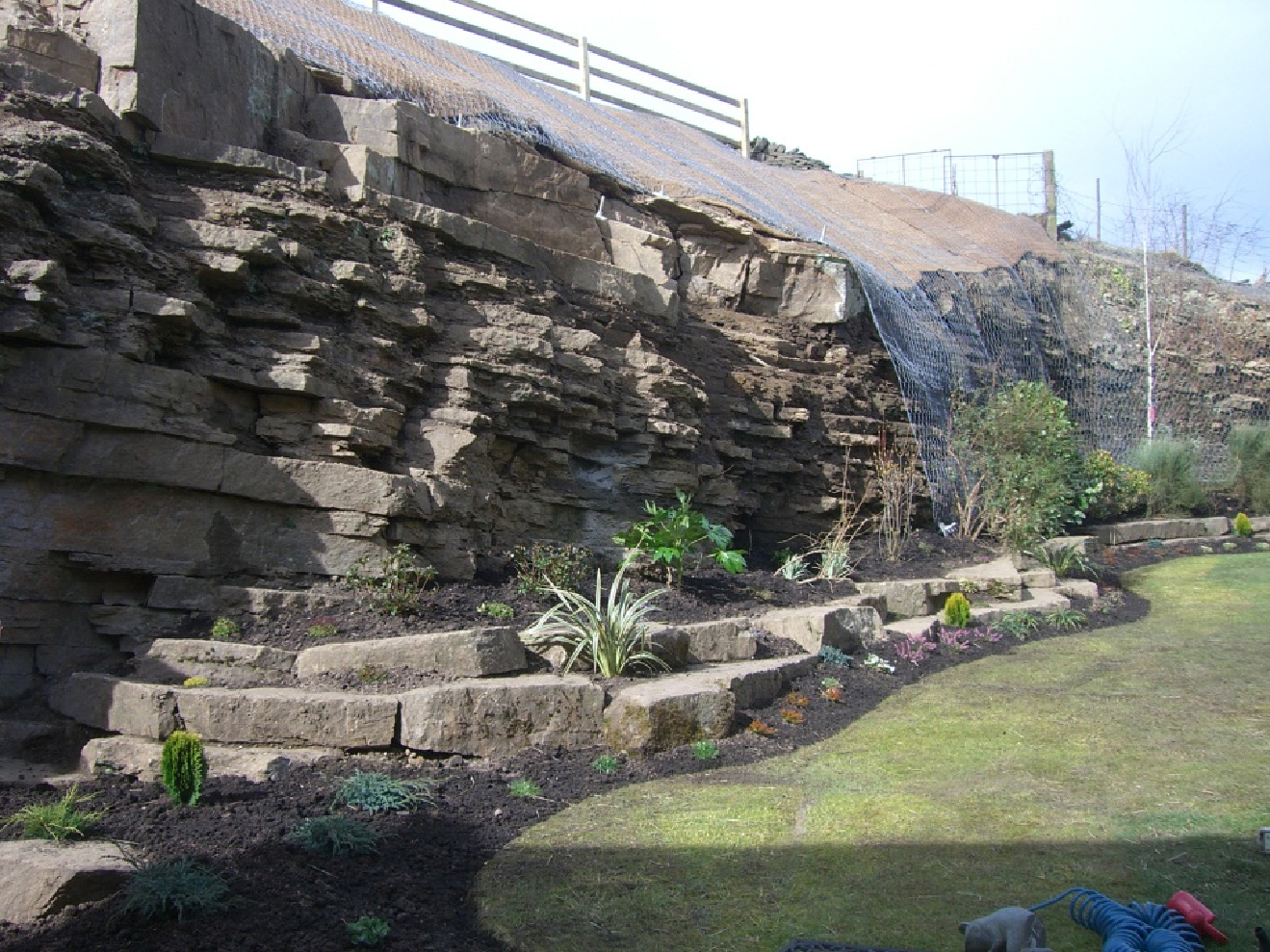 This rock slope above was unstable and a risk to the safety of the occupants of the house on the left of the picture, so Ashton Bennett undertook a slope stability evaluation and following a negotiated purchase of additional land at the top of the slope, the rock was regraded to a safe angle with rock bolts where necessary and grass seeded netting secured on the upper weathered loose rock.
This rock slope above was unstable and a risk to the safety of the occupants of the house on the left of the picture, so Ashton Bennett undertook a slope stability evaluation and following a negotiated purchase of additional land at the top of the slope, the rock was regraded to a safe angle with rock bolts where necessary and grass seeded netting secured on the upper weathered loose rock.